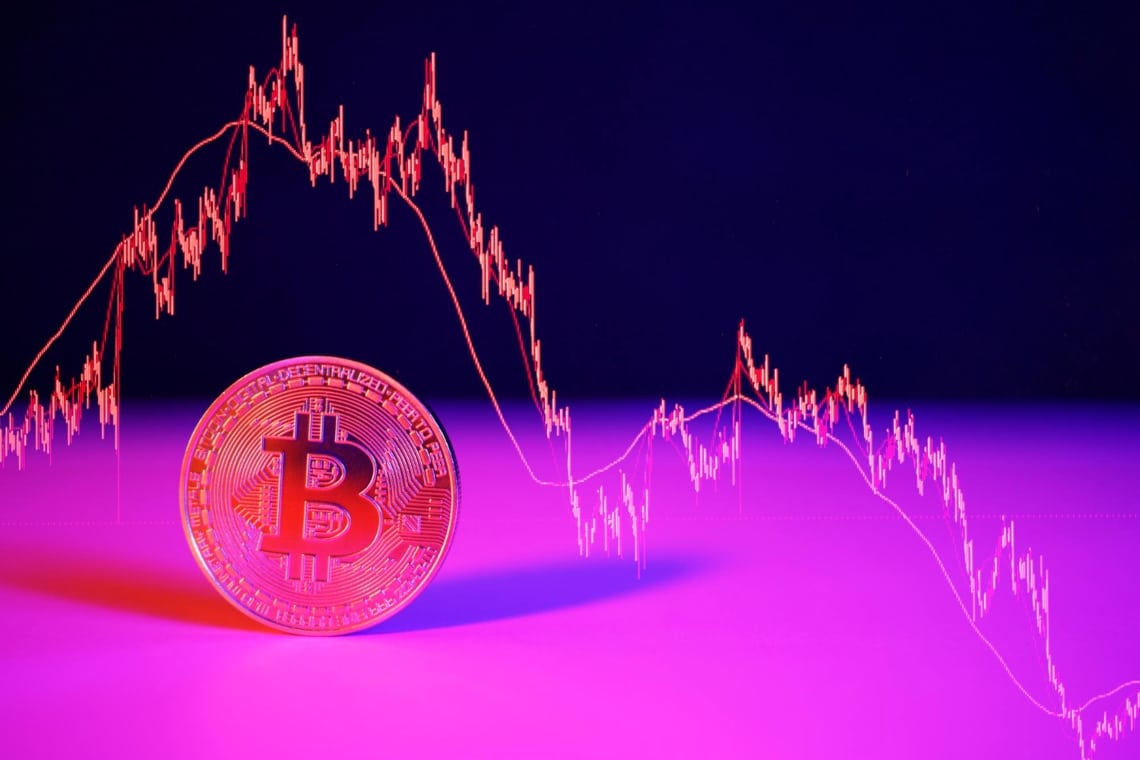During 2022, the crypto market collapsed, but as many as four distinct moments can be identified as to why the collapse occurred.
Summary
The crypto market collapsed: the reason for the first drop
The first drop occurred at the beginning of the year and was actually rather expected.
In fact, it started a few days after hitting new all-time highs, that is, after November 10, 2021 when the total capitalization of the crypto market touched $3.1 trillion. Bitcoin’s price had risen to $69,000 and that of ETH (Ethereum) to nearly $4,900.
Note that not only did that drop appear to be inevitable, given previous increases, but it also lasted several months, until early May 2022 when capitalization had fallen to $1.8 trillion. A decline of -42 percent after setting a new all-time high was perfectly normal.
In fact, it does not seem fair to call this a crash, if only because it occurred over the course of several months.
The first real descent: how and why the crypto market collapsed
Around mid-April 2022, the Fed began the so-called Quantitative Tightening (QT), the reverse of QE. That is, it began withdrawing from the markets part of the immense amount of dollars created and injected between 2020 and 2021.
This paved the way for subsequent crashes, although the trigger for the mid-May crash was the implosion of the Terra/Luna crypto ecosystem.
Thus, two very important factors added up in May: on the one hand, the beginning of the reduction of dollars in circulation in the financial markets, and on the other hand, the biggest crypto crash ever.
Suffice it to say that the cryptocurrency Luna (later renamed LUNC) went from a capitalization of $29 billion to one of $0.5 billion in less than ten days.
Overall in those days, the global crypto market capitalization fell from $1.8 trillion to $1.2 trillion, or a loss of 33 percent in less than two weeks.
So in early 2022, the cumulative loss was 42% in six months, while in May the collapse was 33% in ten days.
The second collapse
This first rapid collapse in 2022 then triggered a second one the following month.
In fact, the implosion of Terra/Luna and the subsequent collapse of the crypto markets caused a series of bankruptcies of crypto companies, such as Voyager, 3AC, but especially Celsius.
The fact is that Celsius was a regulated company, so many believed it to be safe or at least low-risk.
On the other hand, almost everyone knew that the Terra ecosystem was at high risk, although its total implosion took many by surprise. Instead, there were very few who realized that Celsius was also at risk.
Therefore, the failure of Celsius caught almost everyone off guard, generating real panic.
In less than ten days, from June 10 to June 19, the total capitalization of the crypto market fell from $1.3 trillion to less than $900 billion, a drop of more than 30 percent.
So after May’s 33 percent drop in nine days, there was another 30 percent drop in June in roughly the same amount of time.
By that time Bitcoin’s price had fallen as low as $17,500 and Ethereum’s under $1,000.
The slight recovery
Actually, during the first half of August, it seemed that the crypto markets were recovering.
Bitcoin’s price was back above $24,000, while ETH’s even close to $2,000.
The capitalization of the crypto market had rebounded to $1.2 trillion, and it looked as if the recovery might continue.
Instead, it all came to a halt right in mid-August, so that by early November capitalization was back to $1 trillion, with BTC’s price at $20,000 and ETH’s at $1,600.
The third collapse
The third collapse occurred after November 5, due to the collapse of the FTX exchange.
This was a faster collapse, lasting only five days, and smaller in magnitude than the previous ones.
In fact, the overall capitalization of the crypto market returned below $900 billion, losing 27 percent.
Bitcoin’s price fell as low as $15,500, while Ethereum’s price returned below $1,000.
On the one hand, many expected that this collapse could have been worse than previous ones, but on the other hand, it turned out to be totally unexpected.
Or rather, that there could be another collapse was predicted a bit by everyone, but that the trigger was the failure of one of the world’s largest crypto exchanges hardly anyone suspected.
Until November 5, no news had ever been widely circulated regarding the possible insolvency of FTX, which therefore took everyone by surprise.
The consequences of the third collapse
One of the most interesting things to assess at this time is precisely the consequences of this third collapse.
Indeed, in the event that they have already exhausted themselves, they would be far less than expected. However, it is by no means certain that they have already exhausted themselves because just as happened in May more may arise in a few weeks.
It is now therefore very interesting to observe what will happen.
In case the third collapse does not trigger a fourth one, perhaps the bottom of this cycle may have already been touched. It should, however, be remembered that, by proportion, during past cycles, the bottom was touched at much lower levels.
For this reason, there are those who still believe that there could be a fourth collapse such that, for example, the price of Bitcoin would fall below $14,000, or even $12,000.
Right now, as far as is known, the hypothetical fourth collapse is not in the air. But just as the third was triggered by a totally unforeseen event, the possibility of another one cannot be ruled out.




